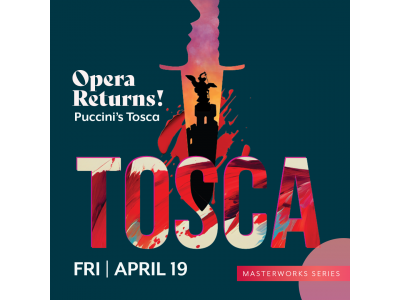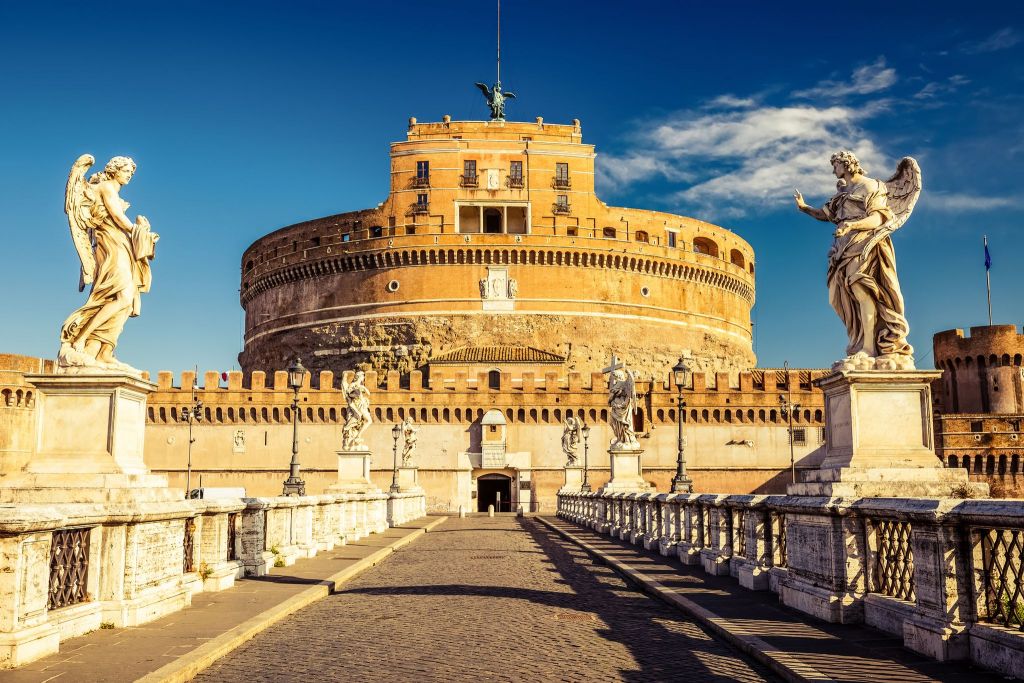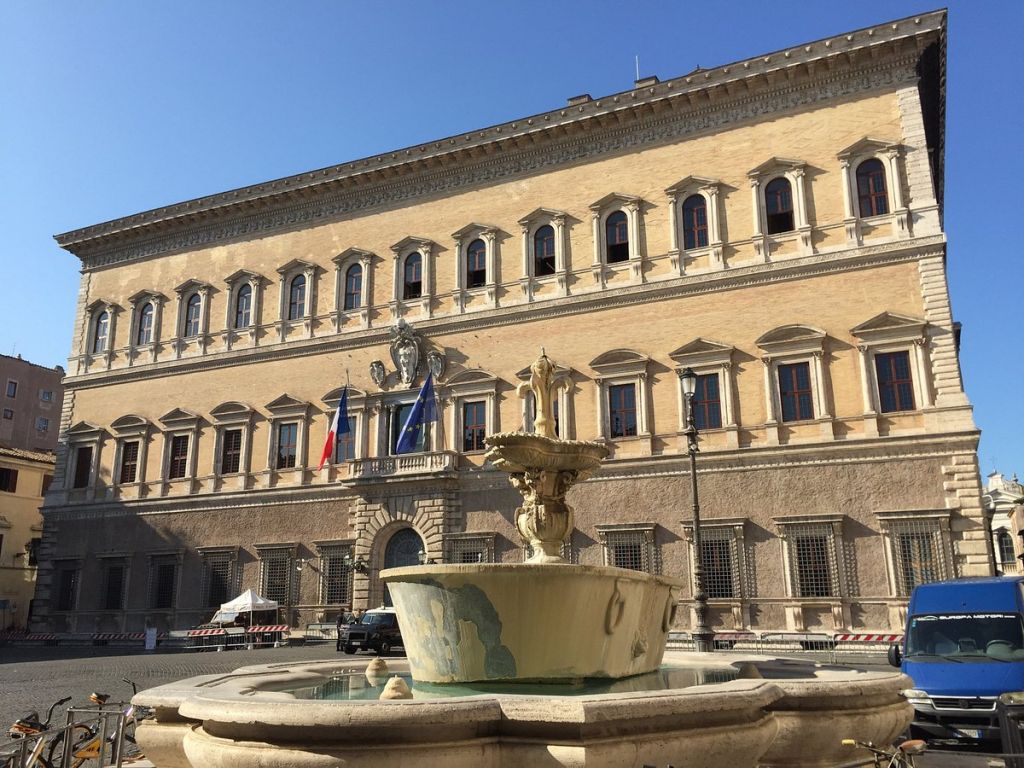Scandal, Love & Seduction: The Story of Puccini's Tosca

ACT I

Cesare Angelotti, a political fugitive, has just escaped from the Castel Sant’Angelo and enters the church of Sant’Andrea della Valle in Rome. He is trying to find the Attavanti chapel, where his sister, the Marchesa Attavanti, has hidden women’s clothes in which he hopes to continue his flight to freedom. No sooner does he disappear in the chapel than the Sacristan (caretaker) enters, looking for the painter Mario Cavaradossi.
Cavaradossi arrives. A friend of Angelotti’s, he has been working on a portrait of Mary Magdalene, whom he has painted as a blonde with great blue eyes. He reflects on the contrast between two beauties: the unknown model and his love, Floria Tosca, who has dark hair and dark eyes.
Floria Tosca, the celebrated singer, enters and recognizes Attavanti’s sister, the Marchesa Attavanti, as the painter’s model. Suddenly seized by jealousy, she suspects Cavaradossi to be in love with the Marchesa, but the painter manages to allay her fears. The two confirm their passionate love for one another before Tosca exits.
Cavaradossi and Angelotti hurriedly depart, not long before the police chief Scarpia enters the church, looking for Angelotti. Having discovered the Marchesa’s fan that Angelotti has accidentally left behind, he uses it to ignite Tosca’s jealousy. The singer decides to go to Cavaradossi’s house, believing that she will discover evidence of her lover’s infidelity, and the police chief orders his officer Spoletta to secretly follow her in order to arrest both men. Proud that his scheme is working, and glad at the prospect of having both Cavaradossi and Tosca in his hands, Scarpia joins the congregation as it assembles for the Te Deum. But his thoughts are not exactly religious ones. As the choir begins to sing, Scarpia exclaims: Tosca! Mi fai dimenticare Iddio! (“Tosca, you make me forget God!”)
ACT II

Act II opens at the Palazzo Farnese. Scarpia is dining alone, still obsessed with his two diabolical plans: destroying Angelotti and Cavaradossi, and blackmailing Tosca. He sends the singer a note, summoning her to come to his room after her performance. In a celebrated aria, Scarpia reveals all his diabolical nature.
Spoletta appears and tells his boss that he has followed Tosca to Cavaradossi’s house, entered, and searched everywhere but failed to find Angelotti. He did, however, arrest the painter and bring him to the palace.
Tosca begins her concert in a nearby room, and the offstage music will accompany, as a stark contrast, the dramatic dialog between Scarpia and Cavaradossi. The painter vehemently denies knowing Angelotti’s whereabouts. Tosca arrives, fresh from the concert, moments before Cavaradossi is led away by Scarpia’s men. Tosca, too, refuses to reveal Angelotti’s hiding place at first. Yet when she hears Cavaradossi being tortured in the next room, she breaks down and lets drop the information Scarpia has been seeking. Confronted with Cavaradossi, she tries to deny having spoken, but then Scarpia, triumphantly, exclaims: Nel pozzo del giardino (“In the well in the garden”). Cavaradossi curses Tosca for having betrayed him.
Just this moment, the news of Napoleon’s victory at Marengo arrives. Cavaradossi, forgetting that he is still in the hands of the enemy, sings an exuberant paean to freedom. Scarpia interrupts Cavaradossi’s euphoric outburst and orders his men to take him away.
Left alone with Tosca, Scarpia tells her in no uncertain terms what he demands of her in order to save Cavaradossi’s life. The diva turns away in disgust, but Scarpia insists that this is the only way she can save her lover. From outside, we can already hear the drums that accompany the condemned to the place of execution. Cavaradossi may well be the next victim.
Tosca sings a fervent prayer in which she asks God why He has put her in such an extreme predicament. But Scarpia won’t be moved: he watches Tosca’s plight as if he were in the theatre, and his desire only increases.
Ebbene? (“Well?”)–Scarpia asks Tosca, who answers: Ma libero all’istante lo voglio! (“But I want him to be free immediately!”) Scarpia explains that everyone must believe Cavaradossi has died. Therefore, a mock execution has to take place: the painter will be shot with blank cartridges. He will be free as soon as everyone has left the scene. Tosca imposes a further condition: she wants safe conduct for Cavaradossi and herself to leave the Papal States. Scarpia agrees to everything. As he is sitting down to write the order for safe conduct, Tosca discovers a knife on his table and quickly stabs him in the chest.
ACT III
Act III opens with the song of a young shepherd boy, heard but not seen. This song and the following orchestral interlude create a peaceful and serene morning atmosphere, in stark contrast with the drama that is about to unfold.
Cavaradossi is sitting in his cell in anticipation of his execution, writing a heart-wrenching farewell letter to Tosca and to life. Tosca unexpectedly arrives in person; she tells him how she killed Scarpia and instructs him to play along with the mock execution: fall down at the first shot and not rise until it is safe to do so. The two lovers sing a beautiful duet about how they will escape to freedom and happiness. In the final section of the duet, they join their voices in a triumphant unison without orchestral accompaniment, rejoicing in their imminent victory.
Cavaradossi is led away, and the shots are fired. Then it is time to get up, but Cavaradossi still doesn’t move. Tosca realizes that Scarpia has deceived her even in death. But there is no time to lament because Scarpia’s murder has been discovered, and all the soldiers are pursuing Tosca. Determined not to be captured, Tosca runs to the parapet and leaps to her death as the soldiers look on in consternation.



